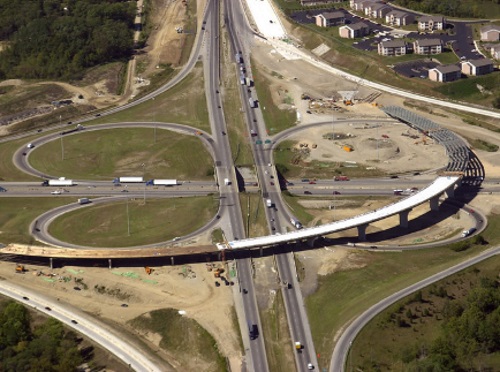A new report issued by the Transportation Research Board calls on the U.S. Department of Transportation to include resilience factors within the benefit-cost analysis or BCA for infrastructure project justifications.
[Above photo by the Ohio DOT]
TRB’s report – entitled Investing in Transportation Resilience: A Framework for Informed Choices – also recommends that resilience be measured and assessed using an “analytic framework” that incorporates detailed inventories of existing and planned assets, such as roads, runways, bridges, docks, and rail lines. It also seeks to include resilience within assessments of the characteristics and likelihood of future natural hazards, along with predictions of the vulnerability of the assets and their critical functions to those hazards.
[Editor’s note: In a related effort, the U.S. General Accounting Office recently issued a “Disaster Resilience Framework” to serve as an analytical guide for federal actions aimed at promoting resilience to natural disasters and changes in the climate across many policy areas, including transportation.]
The report – sponsored by USDOT and undertaken by the Transportation Resilience Metrics Committee – recommends that Congress fund a further study to define the types of data that transportation agencies need for resilience analysis, identify potential sources for this data, and explore how to make that data “more suitable” for analysis.
“Storms, floods, droughts, and other natural hazards are combining with sea-level rise and other effects of climate change to disrupt the functioning of the nation’s transportations systems,” said Joseph Schofer, professor of civil and environmental engineering and associate dean at Northwestern University, in a statement.
“Investing in resilience will require us to make carefully considered choices about how we spend money today to generate benefits that may not be realized until long into the future,” added Schofer, who authored TRB’s report.
The report also stressed that to make resilience a “routine and deliberate element” of transportation investments, Congress should consider requiring all federally funded projects involving long-lived assets to undergo “well-defined” resilience assessments that account for the risks from natural disasters and changing climate conditions.
State departments of transportation are also ramping up their focus on resilience strategies.
For example, a panel of state DOT executives and managers – as well as a team leader from the Federal Highway Administration – shared their insights on infrastructure resilience via a peer exchange during the American Association of State Highway and Transportation Officials 2021 virtual spring meeting in May.
“We are seeing events such as wildfires, flooding, and hurricanes becoming more extreme and occurring more often,” explained Edwin Sniffen, deputy director of highways for the Hawaii Department of Transportation. “We are also seeing more ‘man-made’ issues, too, such as cybersecurity, terrorist attacks, and the like. So it is super important to make our [infrastructure] systems more resilient.”
Sniffen also stressed that formula funding mechanisms are critical to building more resilience into the nation’s transportation system during a hearing on May 13 before the Senate Committee on Appropriations. “When considering funding for resilience, the current core formula program eligibility could be expanded to consider resilience improvements,” he said during his testimony. “Or formula funding could be set aside to focus on resilience-related planning, coordination, and evacuation; or, a discretionary grant program for adaptation strategies could be established. [However] AASHTO generally recommends avoiding new plans, programs, and analysis processes as this increases cost and burden to state DOTs.”

